#Edwardian Coiffure
Text
1908 (April issue) Les Modes Robe d'après-midi par Zimmerman - photo by Félix. From gallica.bnf.fr; fixed spots & flaws w Pshop 1469X2054.

#1908 fashion#1900s fashion#Belle Époque fashion#Edwardian fashion#Zimmerman#Félix#afternoon dress#feathered hat#pompadour coiffure#blouse#clerical neckline#vest jacket#pouter pigeon bodice#long sleeves#close over-skirt#parasol
91 notes
·
View notes
Text
Victorian and Edwardian Hairstyles:

The picture is from this site (please visit it - there is so much more about hairstyles there!):
What kind of hairstyle do you think Montgomery's heroines wore?
I think Valancy wanted to put her hair in the Greek Hairstyle, but had to wear it in Everyday Pompadour. Later, she had it cut and that was HER best hairstyle.
Emily was said to "wear her hair low" when most women wore it up, so maybe "Madonna coiffure" or "with covered ears" or "Dip Pompadour" (I don't really like "Low Pompadour" picture, though, but it seems to suit "a low" hairstyle).
And I can definitely see Anne in "Madonna Coiffure", "Coronet Hairstyle", "Soft Pompadour".
11 notes
·
View notes
Text

AUDREY HEPBURN IN GIVENCHY HATS: MY FAIR LADY TO THE LIFE
Photography by Cecil Beaton
1964
There's more to the pages than the obvious delight of Audrey Hepburn wearing fascinating hats. Behind them, there's a spirited collaboration among three famous talents, namely, Miss Hepburn herself, Hubert de Givenchy, whose clothes she has worn and adored for years, both on- and off-screen, and Cecil Beaton, who designed the triumphant costumes for the original My Fair Lady on Broadway, and has designed all costumes and sets for the spectacular movie version—soon to be released—starring Audrey Hepburn as Eliza.
Now, for the great triple play. Givenchy designed the hats on these four pages as brilliantly contemporary versions of the hats in My Fair Lady, Miss Hepburn wears them and Beaton photographed them for Vogue.
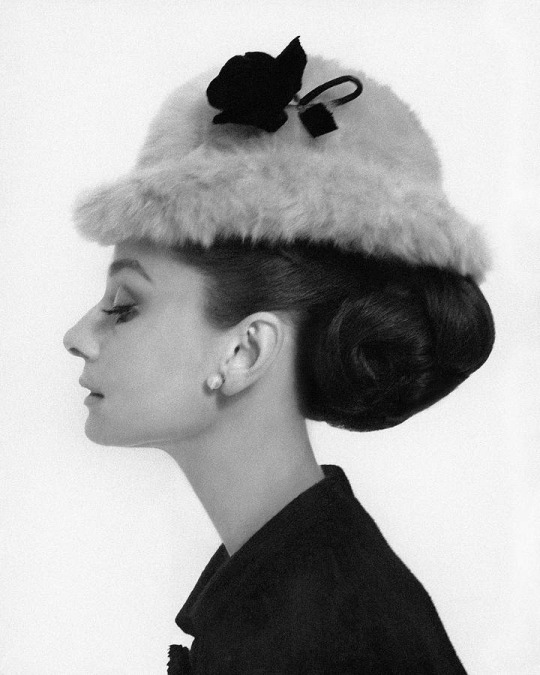
Opposite page: Edwardian bowler of camellia-pink brushed melusine, with a black velvet rose.
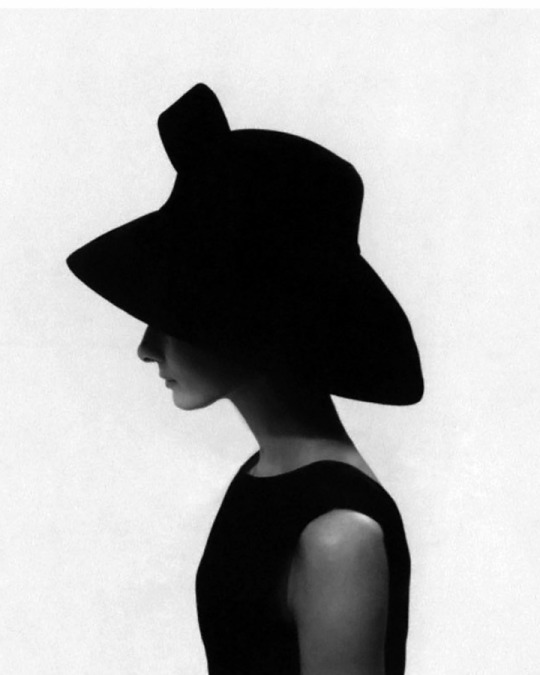
Above, left: Deep-brimmed capeline-ite shape, an echo of Ascot Opening Day—in black velvet; asymmetrical bow.
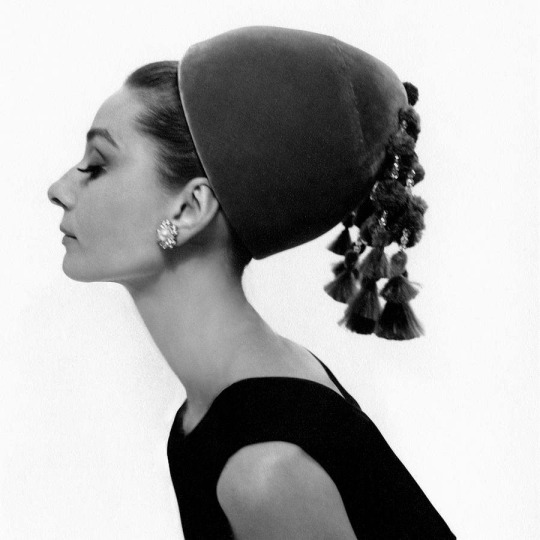
Above, right: Some of the ladies in the Covent Garden scene wear little Oriental evening fantasies like this—bright jade green velvet with tassel of cut feathers, crystal beads. (Miss Hepburn is mad about this one, plans to wear it oftes for late day and small dinners.)
Below, right: An Edwardian child's sailor hat done in wild mink, brown suède, with a flat brown-suède bow.
Adaptations of many of the Givenchy hats on these four pages can be found in America at Jordan March, Boston: Rich's; I. Magnin. Miss Hepburn's coiffures, all four pages, by Roger of Alexandre.
2 notes
·
View notes
Photo
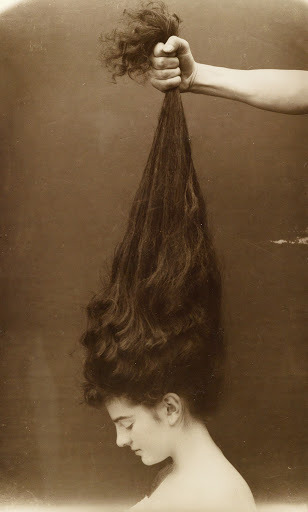
17 notes
·
View notes
Photo
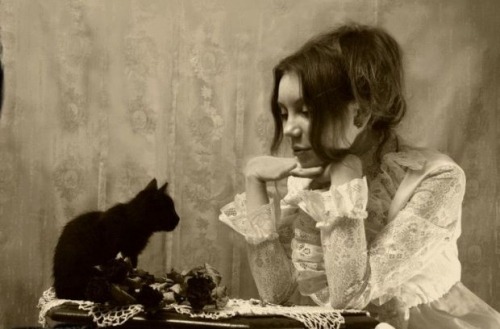
#antique#black#black and white#black ans white#black cat#black&white#cat#chat#chaton#chemisier#coiffe#coiffure#creepy#dark#dark hair#demoiselle#edwardian#eerie#femme#fille#ghostly#girl#Halloween#kitten#lady#macabre#noir#Noir&Blanc#psychic#sepia
306 notes
·
View notes
Note
Hi! I don't know if you've ever answered something like this before, but do you know how people used to wash their hair in times before there was shampoo? Because I've tried to look it up, and found several different answers. Like not washing at all but brushing a lot, or using lye soap that ruins your hair and having to wear wigs. Since you know a lot about fashion history, do you know what happened?
Disclaimer: I am a white woman with relatively straight hair. Most of the primary sources I’ve read assume their default audience is women with relatively straight hair. Women with curly and/or Afro-textured hair absolutely lived in Europe and the United States during these periods, but I regret to say that I’m less knowledgeable about what they did. Please take that into account when reading this.
Hello!
I in fact did an experiment wherein I used Victorian haircare methods for two weeks, washing weekly as was often recommended (or biweekly, depending on the source, but I went with once a week). But I didn’t tag it consistently, like an idiot, so unfortunately I can’t point you to it.
Luckily, lye soap was not commonly used on one’s hair. Castile soap was, and while that’s somewhat better, it also totally borks the pH balance because it’s so basic. You can kind of counteract this by following with a vinegar rinse, which had been A Thing “for shine” since before using soap was even common, but the damage will still catch up with you eventually.
(Very few women wore full-on wigs at pretty much any point in western history, though, I will point out. Sometimes augmenting with hairpieces was done, but seldom an actual wig. Yes, even in the 18th century.)
Soap didn’t start being used on hair until the 19th century, though. So what did they do before? Rosemary water rinses were popular, as were various egg mixtures. And these methods remained popular long after washing with soap became common. Hair was often cleaned with things you had around the house- which could prove disastrous if you followed one Victorian guide that advised dilute ammonia.
Fun fact: my great-grandmother (born 1903) washed my mom’s hair with egg yolks and vinegar when Mom visited her as a kid in the 1950s-60s. And when I was little, Mom used to condition my hair with vinegar after she shampooed it. Old habits die hard.
“But Marzi,” you may be thinking, “if they washed their hair weekly or even less often, it must have been disgusting!”
Well...not really. Modern shampoo is very strong compared to most washes they used, and strips out natural oils more thoroughly. This causes the scalp to compensate by producing way more oil than necessary. In the main, our hair probably gets greasy much faster than our ancestors’ did.
Brushing was a key part of most women’s hair routines for a long time, specifically with natural bristle brushes. This would distribute the oils from the scalp down the length of the hair, protecting the hair and keeping it from looking too greasy. Brushing could also remove dirt from going about one’s day.
Caveat if you wish to try this- you have to clean your brush quite frequently to avoid spreading extra oil through your hair.
Ever heard the phrase “I washed my hair and now I can’t do anything with it?” That’s because a bit of natural oil in your hair makes it more sculptable and less prone to flyaways- perfect in eras where The Look was to have your hair up in elaborate coiffures. Or at least like. Up, tidy, and smooth. Speaking from experience, Victorian styles are easier to achieve neatly with what we now call “second day hair.”
Her Most Excellent Victwardian Witchness Bernadette Banner just did a video about washing and styling her hair using Edwardian techniques, which I highly recommend.
Hope this was helpful!
132 notes
·
View notes
Text
A Practical Proposal
Many moons ago I said I was going to write a series of historical AUs with different pairings for each decade of the 20th century and now maybe I’m actually doing it? So here’s Edwardian marriage of convenience FS...
Leo Fitz proposed to Jemma Simmons a few years into the new century. They were sitting next to a potted plant at a ball, angled in such a way as to be virtually invisible from most vantage points, and rather glumly regarding the plate of substandard petit-fours and cups of weak punch they had managed to pilfer from the refreshment table. After nearly ten years, they had perfected their ball routine. She was rapidly approaching spinsterdom and best known for sitting through the weddings of all four of her younger sisters with a smile that truly seemed genuine. He was a third son who had had the misfortune to neither go into the army or the clergy and had instead made a tidy fortune in trade substantial enough to lease a town home but not nearly appealing enough to attract any eligible debutantes. Both of them were intimately acquainted with the sidelines and so it had been the most natural thing in the world for them to throw their lot in with each other.
“Considering how very much on the shelf I am, you would think that I could leave off wearing quite so many ruffles,” Jemma said, tugging unhappily at the three layers of cream ruffles edging the bottom of her dress. She had caught one on the carriage door on purpose on the way here but unfortunately, her mother had commandeered a lady's maid to fix it immediately. She had thought a torn ruffle would be enough to get her out of at least three dances with gentlemen who owed her brothers-in-law a favor. (It was all terribly well intentioned and somehow that made it worse.)
“I think you look nice,” Fitz said loyally around a mouthful of petit-four.
“The ruffles aren't ideal,” he added when she cast a skeptical look his way. “But they're not terrible. Could be worse—it could have been feathers, like that time at the Xavier ball.”
They both shivered in remembered horror.
“One more season ought to do it, do you think? For me to retire from all of this,” she explained, waving one hand in a motion that encompassed her unfortunate ruffles, her empty dance card, and the plant fronds currently threatening to undo her coiffure. “Of course, I'll have to ask my father for an allowance and he'll be dreadfully stingy and I'll likely be banished to some drafty country manor where I'll have to make friends with cows but it must be better than sitting here trussed up like a prize goose hearing people be sympathetic about my plight. Why is it that men always get to be confirmed bachelors and set up comfortable establishments while women are shunted off to the countryside to be companions to the most convenient elderly relative?”
“ You're welcome to co-opt my comfortable establishment any time. Although I'm not sure my parlor could fit any more suffragist banners.” He paused a moment, considering. “My drawing room, however, certainly could.”
Jemma sighed. “I know and I do appreciate it. I just...I'm not sure whether to look forward to settling firmly into spinsterhood or to dread it. I don't know if I would have liked marriage but it might have nice to have had someone else to face all of this with.”
“Then marry me.”
Read the rest on AO3!
#fitzsimmons#my writing#fsfic#leo fitz#jemma simmons#aos#this is wildly self-indulgent#but there's a pandemic so...#Decades Project
32 notes
·
View notes
Text
2.
Human history is rich with hair trends, for centuries it has been cut, coloured and covered, styled, shaped and shown off. As Lauren Pilippon stated, “hairstyling is a genuine art form: it symbolically represents our transition from unkempt barbarians to civilised social beings. We are the only animals on the planet to give our hair so much care and attention”. As our priorities have shifted from the days of mere survival, self-consciousness has become a major factor in our growth as humans and, whilst it may be considered a vanity, our hair has become a great concern of ours. In its most rudimentary state, hair provides protection from the sun’s UV rays and is a source of insulation in cooler climates. Inherently hair represents youth, vitality and fertility, making it a great point of sexual attraction when seeking a mate. Beyond that we have placed our own meanings, connotations, rules and prejudices on the stuff, we spend hours altering its physical state and as of 2018, the global haircare market was estimated to be worth about $87.9 billion. The transformative power of hair has raised the likes of Marilyn Monroe and Rita Hayworth from unknown beauties to Hollywood icons. Hayworth (born Margarita Carmen Cansino) changed her hair from dark brown to auburn and had an electrolysis treatment to alter her hairline whilst Monroe was famed for her platinum tresses which she got retouched every Saturday, flying her colourist from San Diego to Los Angeles every week. We idolise celebrities’ hair in the modern world in a very similar way to how the ancient Romans worshipped that of their gods and goddesses; one major difference however is that we have access to our idols. A growing phenomenon of the 20th and 21st century has been the auctioning of hair, with the record standing at $115,000 for a few strands of Elvis Presley’s hair. In these cases hair has performed as both a tool for self protection and a sentimental object to be preserved, its purpose is simultaneously functional and decorative; it must be for this reason that hair has become such a valuable tool to humans.
Hair has had a long history as a financial source. When wigs reached their height of extravagance in the 1770s, they required masses of real hair to build. Whilst some people in financially vulnerable positions would sell their hair to wig makers, many cases of hair-stealing crimes emerged. Some people were wrongly informed that hair removal was a medical treatment for fever, others were captured and had their hair forcibly removed. While cases like these are rare in Europe today, still in some Eastern cultures the selling of hair is commonplace practice. The non-consensual cutting of hair has been used in places such as c19th prisons and the Nazi concentration camps as an instrument of humiliation and control. Sociologist Anthony Synnott declared, hair is “a powerful symbol of the self”, with this in mind the removal of hair is a form of stripping away a part of ourselves. A warder at mill bank prison told Henry Mayhew (journalist and social reformer) that many inmates “[especially female prisoners] would rather lose their lives than their hair!”. Cases such as these are valuable sources to study when considering the psychological impact our hair has on us and why we still give it so much importance today.
Hair has been strongly influenced by religion for centuries, but much like hair’s place in politics, this has shifted warped throughout time. In the English civil war, hairstyles became highly factionalised. The oppositions the Cavaliers and the Roundheads’ hair provided a symbol for their opposing ideologies. The long-haired Cavaliers believed in political and religious orthodoxy, they fought for the continuation of royalism as the divine right of kings proved royalty to be closest to god. Contradicting these beliefs were the cropped-haired Roundheads, parliamentarians by cause, they stood as revolutionaries for the partial democratisation of the British administration. These two sides utilised their appearance to express either rebellion or conservatism in a way that has been mimicked in waves throughout history and still today- it would be worth studying the origins of the punk movement with the use of hair to reflect rebellion. In other cases it is seen to be the cropped or shaven hair that is more holy. The early Christian church tried to stop people from wearing wigs, especially women as it was seen to be an offense to chastity and a visible connection with illicit pleasures to wear such an embellishment on the head. In the first century AD, Clement of Alexandria stated that it was impossible to receive the priest’s blessing offered by laying his hands over the head as the benediction could not pass through the hair of a stranger. This attitude was further reflected in the second century by the early Christian author, Tertullian, who believed that the personal disguise provided by a wig was adulterous even writing that “all wigs are such disguises and inventions of the devil… if you will not throw away you false hair as hateful to Heaven, let me make it hateful to you by reminding you that it may well have come from the head of a damned person or an unclean person” . These attitudes of the church were consistent across centuries with the Council of Constantinople even excommunicating a number of wig-wearing Christians in 692 AD. Whilst this is seemingly a more forceful dictation of how one must present in the church, for Buddhist monks, the act of shaving one's head embodies the humility and willingness to renounce earthly cares that are required of the religious practice. This therefore stands as an initiation process to shift the cause of one’s life. It would be worth exploring the sacrifice of hair in a consensual act, such as in this religious process,when studying the symbolism hair holds in our earthly lifestyles.
Different cultural movements through the ages have provided wildly opposing hairstyles and attitudes towards hair. In the 60s, influenced by bands like The Beatles and The Rolling Stones, a trend of longer, free growing hair swept the world. Music genres like glam rock and punk brought in their own aesthetics, heavily influencing the way hair was worn by both genders. And the anti establishment ideologies of the 60’s inspired wearing ones natural hair in a free afro style. However, perhaps the largest and most influential hair trend of the twentieth century was the 1920s bob. In 1909 Antoine de Paris cut the hair of French actress Eva Lavallière, whilst the trend didn't gain momentum for around a decade, the work of this one hairstylist provided a foundation for radical change to grow. The 1920s bobbed hair phase provided women with a hairstyle that both visually represented and practically supported the emergence of womens’ liberation. Singer Mary Garden was in her 50s when she cut her hair and she wrote of the experience to have a profound effect on how she viewed her role as a woman. “Bobbed hair is a state of mind and not merely a new manner of dressing my head” she stated, “to my way of thinking, long hair belongs to the age of general feminine helplessness. Bobbed hair belongs to the age of freedom, frankness, and progressiveness.” Former trends from the Victorian and Edwardian eras were characterised by the abundance of accessories including postiches, padding and ornaments. The bob offered a complete antithesis to these fashions. The style embodied the freedom and youthfulness that characterised the ‘new woman’, it worked with new technological advancements such as the car, which had an open top which would have ruined a victorian padded coiffure. It also reflected the shorter, swinging hemlines that characterised the new style of dress. It was accessible to all and cheap to maintain, meaning women had far more time to do other things. The new style wasn't entirely accepted with open arms however. In 1923 a report appeared in the newspaper that some hairdressers refused to cut bobs for women unless they were married and their husband approved due to great backlash many of them received from the men in their client’s lives. Issues became more serious in situations like that of Mexico city in 1924 when the Archbishop denounced the bobbed fashion and excluded women with the style from church. Some self-appointed vigilantes took it upon themselves to seek out the wearers of the style and forcibly shave them as a punishment. This resulted in a mass of riots across the city between armed soldiers and many students. An even worse case of intolerance came later in the 1920s in China where the execution of women with these short styles was introduced; it was interpreted as evidence for the support of oppositional politics. This hairstyle change took place in an era of great societal shift. Whether the style was a product that adapted to this new female behaviour, or the style itself encouraged a new way of living, it's not clear; what is clear however is that it signified a great turning point in gender politics. The new ‘boyish’ look provided an opportunity for young women to take on roles that were previously only given to men, sparking opposition but ultimately forming a new path for the modern woman to evolve. Specific movements like these can seem frivolous on the surface but under better scrutiny, we can find great power in the way hair has been used to oppose and change politics. I think this is a really interesting starting point to then consider the impact hair has on today’s world.
From classic literature to fairytales, folklore to films, hair has been a major part in creating a character’s identity. Classically tropes like blonde hair have been attributed to the good, innocent heroines of stories, her youth and purity, as well as charm and good luck signified by the fair hue meant she was promised the happy ending. Contrastingly the dark haired woman has always held an air of danger and fierceness. I think the classic stories we have all grown up hearing, whether they are fairy tales or old legends, could provide an interesting indicator for how we subconsciously judge hair still to this day. Through studying the ways in which the entertainment media depict hair, I believe we may be able to shine a light on many of our internalised stereotypes linked with hair and thus re educate our initial assumptions.
5 notes
·
View notes
Photo
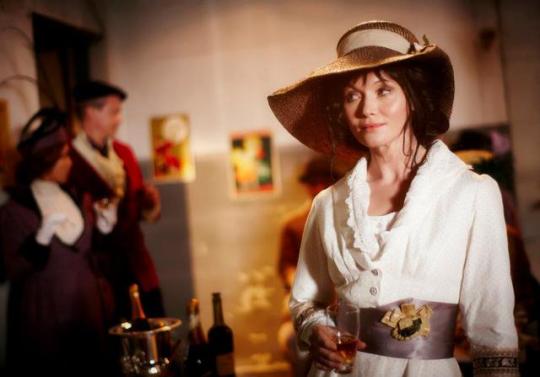

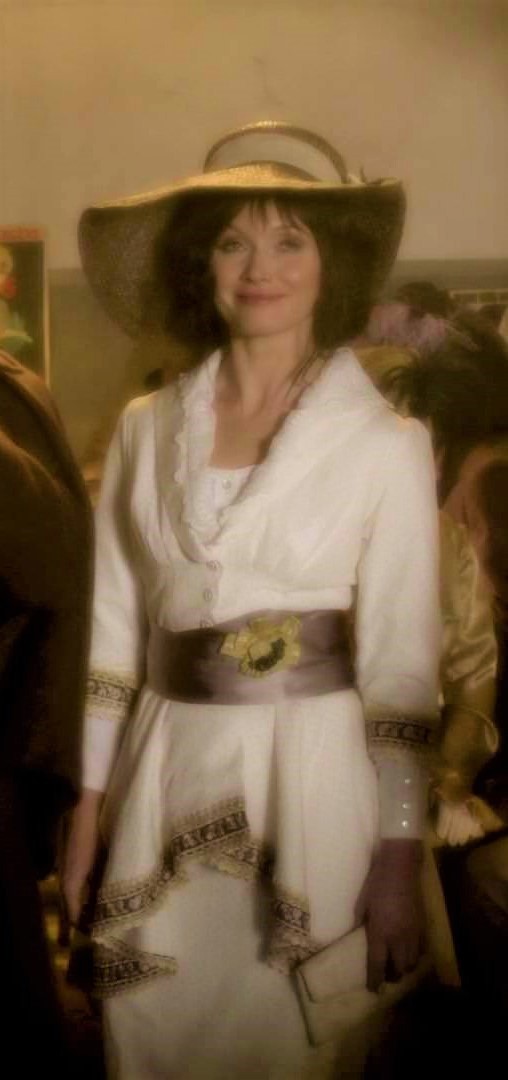



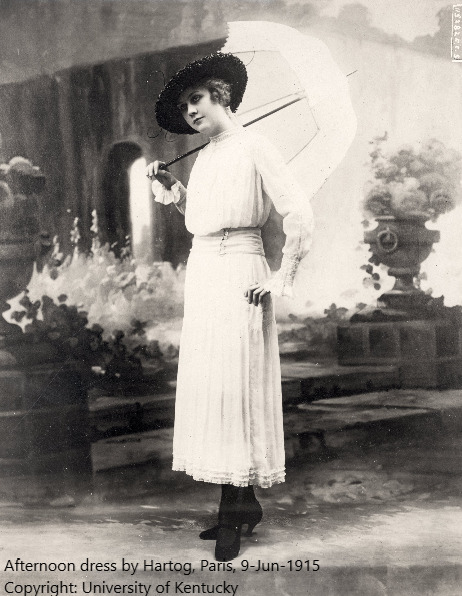
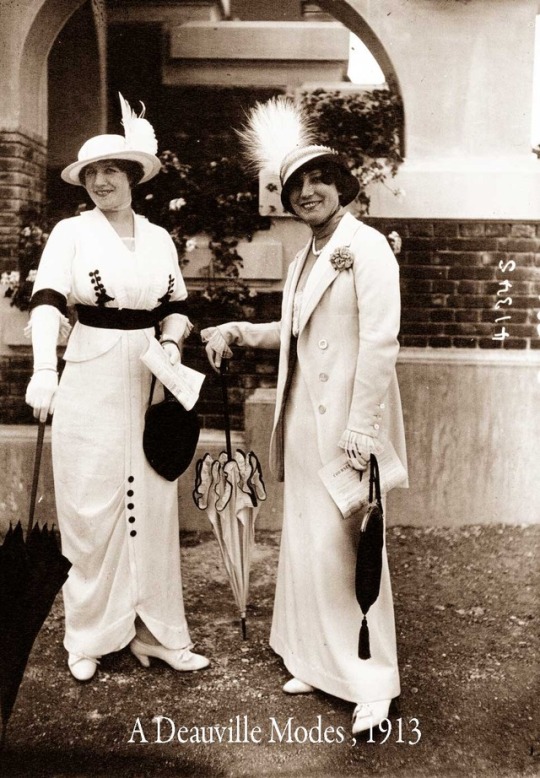
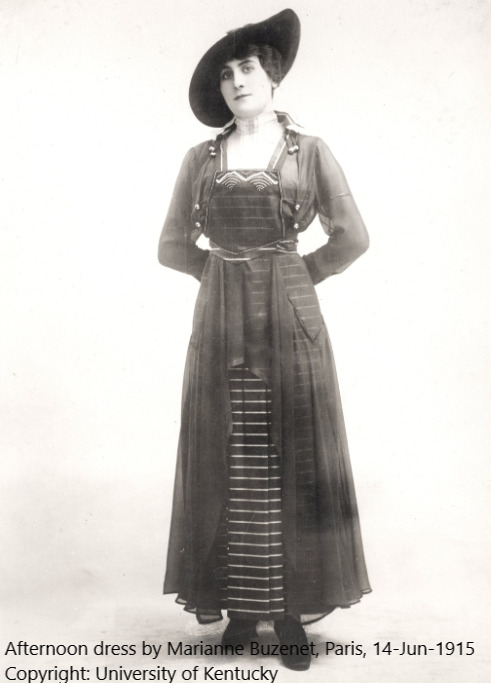
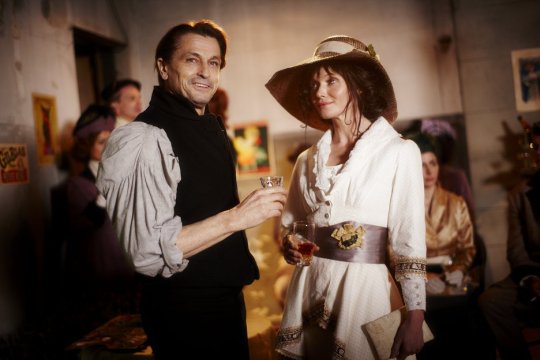
Phryne’s third outfit of “Murder in Montparnasse” (Season 1, Episode 7) is a dress worn in the flashback to her time in Paris, set ten years before.
She looks to be wearing a classic afternoon dress in the style of the 1910′s, with the horizontal layered effect of tailored jackets over a matching skirt. Her cotton dress has a delicate cream polka dot print to the fabric, accented with a wide lace collar that is one of the lingering effects of the Edwardian high-necked blouses. It has an empire-waist with white buttons worn on top of a cotton chemise.
The jacket has a “fishtail” hem, which rises in the front and lowers in the back, along with straight sleeves that narrow at the cuffs. The cuffs have three matching buttons, and are delineated from the sleeves with an embroidered trim that runs along the edge of the jacket and the hem of the skirt.
The overall look is pulled together with a purple silk sash, worn in the style of a cummerbund, and accented with a brown ribbon cockade (possibly worn upside down?). Miss Fisher finishes the ensemble with a wide straw hat often worn with the low coiffure hairstyles of the Edwardian era, as well as white garters and side-button ankle boots.
Season 1, Episode 7 - “Murder in Montparnasse”
Screencaps from here, promotional photo from the official Facebook and various sources, vintage photos from various sources (x, x, x, x), research from here, here, and here.
#miss fisher's murder mysteries#mfmm#phryne fisher#phryne fisher's frocks#Essie Davis#Season One#murder in montparnasse#1x07#s1e07#1910's fashion#vintage fashion#costumes#Costume Study#costume breakdown#costume design
39 notes
·
View notes
Text

1908 (April issue) Les Modes Toilettes de Paquin - photos by Boisonnas & Taponier. From gallica.bnf.fr; fixed spots & flaws w Pshop 1609X2250.
#1908 fashion#1900s fashion#Belle Époque fashion#Edwardian fashion#Paquin#Boissonas & Taponier#dinner dress#evening dress#afternoon dress#feathered hat#feather boa#close skirt#pompadour coiffure
121 notes
·
View notes
Text
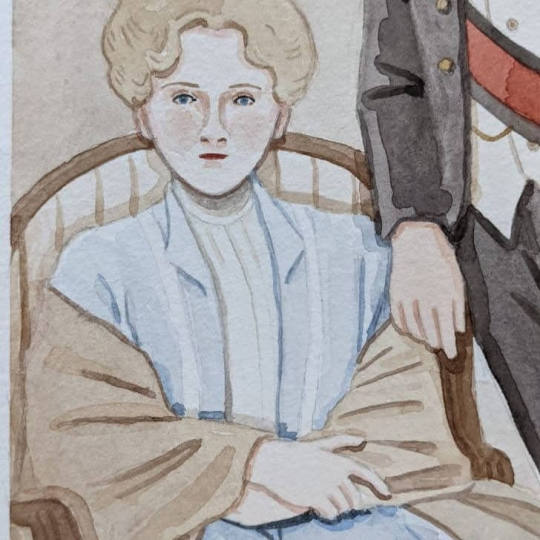
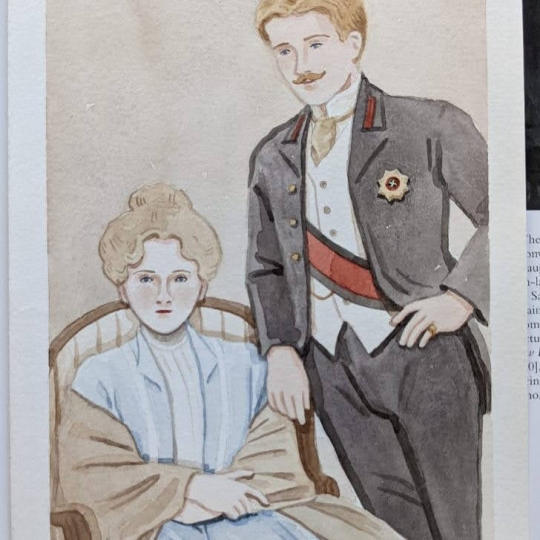

Close ups of the previous painting. Princess Sofiya Ilyichna Samarina is on the left, while Prince Eduard Konstantinovich Yefremov is on the right.
Sonya (left) wears a chignon Edwardian coiffure, a pale blue Edwardian walking suit c. 1901, and a cashmere shawl (which I royally messed up). She sits in a chair based on the baroque-style chairs Sargent used in his own portraits. Eduard (right) wears a gold silk ascot tie, a white silk waistcoat, a double-breasted civil servant's uniform jacket (epaulettes & all!), a signet ring, a pocket watch with a Prince-Alfred chain, and the star and sash of the Order of St. Vladimir, first class.
0 notes
Photo
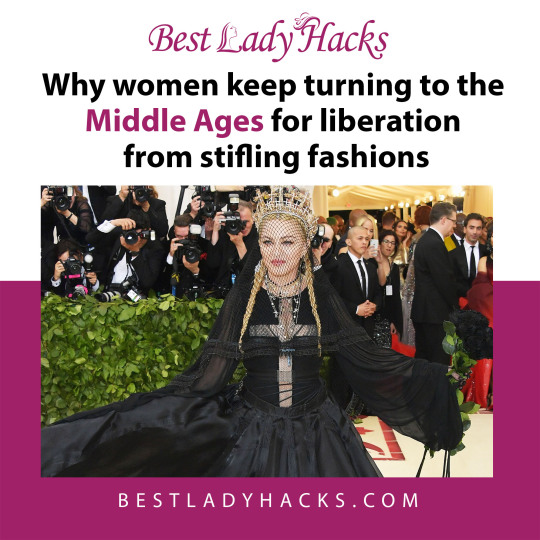
https://bestladyhacks.com/1why-women-keep-turning-to-the-middle-ages-for-liberation-from-stifling-fashions/
The Middle Ages would possibly appear the remaining location feminists might visit are looking for inspiration. But from across the 1850s advocates for getting dressed reform withinside the English-talking global and Germany known as for a go back to the silhouettes of the classical and medieval global.
In doing so that they commenced a feminist culture that maintains today. We noticed this maximum these days on the Met Gala in which stars donned style stimulated with the aid of using the Roman Catholic Church’s lengthy heyday from the 12 months 500 to 1550, which includes Rihanna’s glittering papal miter and cloak. It became tough to overlook the pointed irreverence of Rihanna assuming (and sexing up) the ultimate mantle of a group wherein ladies can’t preserve office. Coming at a time while campaigns in opposition to sexual harassment are sweeping the amusement industry, the subject became incredibly pertinent.
Aesthete and feminist Mary Eliza Haweis’s prominent treatise The Art of Dress (1880) and Anna Muthesius’s Das Eigenkleid der Frau (Women’s Own Dress, 1903) had been amongst the ones manifestos urging ladies to shed their restrictive corsets and include the greater natural “vintage waist” of pre-Elizabethan times. These free-waisted shifts, produced with the aid of using corporations like Liberty of London, shared with clothes which include bloomers and divided skirts the sensible goal of growing ladies’ bodily emancipation and social mobility. Their recourse to vintage patterns became firmly withinside the call of New Womanhood.
Women who followed this get dressed had been, predictably, ridiculed in conservative quarters. The cartoons in Punch mag with the aid of using George du Maurier depict “Aesthetic” ladies as decadent jut-jawed poseurs of their Juliet sleeves (a protracted sleeve with a gasp on the top), ugly parodies of the painter William Morris’s spouse and muse Jane, who epitomized this fashion. Despite the criticism, the Aesthetic fashion of first-wave get dressed reform back withinside the years related to the sexual revolution and the upward thrust of second-wave feminism.
In the Nineteen Sixties and ’70s, style labels which include Biba created a maxi-attire that remodeled the flowing skirts and trumpet sleeves of the medieval bliaut (a robe with sleeves putting to the floor) because it has been interpreted with the aid of using 19th-century get dressed reformers. While Biba’s Swinging London aesthetic and commercialism didn’t win favor amongst radical and Marxist feminists, its sexually libertarian ethos presents it an area on this feminist story.
From battlefield to runway
Joan of Arc has presented an opportunity for medieval fashion for the reason that earliest days of current feminism. Lauded in literature, artwork, and theatre because of the apex of woman heroism, her enduring legacy in ladies’ style comes from her iconic cropped hair, which stimulated the bobbed haircut that freed ladies in their encumbering Edwardian coiffures withinside the early twentieth century. First delivered in France in 1909, the 12 months of Joan’s beatification, and known as the coupe à Los Angeles Jeanne d’Arc, this haircut later has become synonymous with the emancipated flappers of the Jazz Age.
Unlike the flowing robes that prompted the Dress Reformers, Joan’s armor has now no longer stimulated normal models for ladies. But her distinct fashion of martial gamine has led high fashion designers, which includes Paco Rabanne, Christian Dior, and Alexander McQueen, to create Joan of Arc-stimulated strains and runway shows.
Photographer Annie Liebovitz channeled centuries of Joan iconography while she photographed actress Emma Thompson, an avowed feminist, in mail shirt and armor for the February 1996 cowl of Vanity Fair. The ranks of Joans at the crimson carpet on the latest Met Gala would possibly, however, have had had a greater on-the-spot supply in Game of Thrones’s conspicuously Joan-like Brienne of Tarth or maybe Cersei Lannister, whose appearance has morphed from flowing-tressed sylph to crop-haired general.
One in particular welcome improvement on the Met Gala became seeing the mail coif related to Joan followed with the aid of using ladies of coloration which includes Priyanka Chopra and Zendaya. This flow distanced the saint from her latest nationalist and racist recruitment with the aid of using Marine Le Pen of France’s Front National and reclaimed her as an icon of ferocity for all ladies.
In many methods, Joan became an extraordinary figure, a warrior amongst wives. Yet she is likewise inseparable from the Catholic Middle Ages, the tradition that each enabled her fantastic ascent and ensured her violent demise.
She is symbolic of a female who fights, however additionally warns us that a female status by me can founder on the impenetrable partitions of masculine power. That’s why a military of Joans is needed, to show and defeat the misogyny that has endured for too many centuries.
0 notes
Photo

Ursula Mary (née Barclay), Lady Monkswell
by Alexander Bassano
whole-plate glass negative, 16 June 1911
#Ursula Mary#Lady Monkswell#bassano#photograpy#20th century#fashion#hair#decor#Baron Monkswell#1911#Edwardian Coiffure#edwardian era#Alexander Bassano
4 notes
·
View notes
Photo
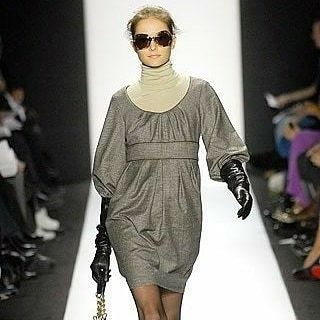
FALL 2020 READY-TO-WEAR Badgley Mischka NEW YORK,FEBRUARY 8, 2020 by LIANA SATENSTEIN For its fall 2020 show, Badgley Mischka incorporated two very English but very different cultural moments. One was the period TV series Downton Abbey, set in the Edwardian era (think: high necklines and stiff bodices). Then there was the loose, hippie-fied bohemian era of the Beatles in the ’60s and ’70s. (Designers Mark Badgley and James Mischka were also inspired by the Edwardian-era American artist John Singer Sargent.) While both British influences were visually opposite, they worked quite seamlessly together on the runway. Some of the pieces could have leaned too prim, such as the skirt set in Look 2, but they felt relaxed thanks to a bit of flexibility and modernity. The top came with a belt tightly cinched at the waist, creating a stellar hourglass silhouette, especially with the exaggerated bishop sleeves. Of course, there were the megawatt numbers from the label. Those included standard black-tie ensembles, such as a clingy, off-the-shoulder black gown. While these looks weren’t groundbreaking, they were still pretty and captivating. The standout pieces were the least formal, in particular a camel-hued, butter-soft jacket-poncho belted at the waist. With fringe that kicked up with every step the model took, it had the power to elevate any daytime outfit. vogue.com Haute Couture et Coiffure.Fashion & Hair. GIANewYork, New York. globalinfluenceragency.com @fashionguru327 @ItalianetAmeri1 @t.o.mblack @GIANewYork @olney_fashions_ @Pinterestbusiness @globalinfluenceragency @fashiononetelevision Pinterest.com vogue.com vogue.co.uk behance.net globalinfluenceragency.com paypal.me/fashionguru327 parisiangentleman.co.uk modaoperandi.com https://www.facebook.com/fashionguru327/ (at Italian et Americaine Haute Couture et Coiffure.) https://www.instagram.com/p/CAIrkRTndQc/?igshid=34r7oxao1zcd
0 notes
Note
Hi there! I was looking at an 1881 painting, specifically Manet's Bar aux Folies-Bergère, in which the woman portrayed has bangs - and it got me to thinking, how common were bangs and other similar hairstyles in the Victorian/Edwardian era? I'm aware of the curled front "bangs" of the 1830s and such, but for some reason I never realized they might have existed during the rest of the century.
I love that painting!
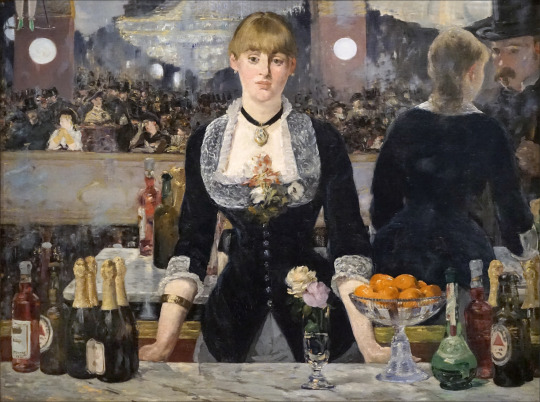
(Fun fact- the central figure is a real person, a barmaid and probable sex worker nicknamed Suzon.)
Yep, bangs were a thing in western fashion starting around the 1870s. There were earlier hairstyles involving bang-like situations too, like the curls you mentioned or the lesser-known “coiffure a la Titus” (Regency pixie cut). But bangs as we know them started later on.
Victorian bangs began as tiny, tight curls on a woman’s forehead and gradually developed their straight iteration as the ‘70s progressed. Very short bangs were the norm until roughly the 1910s, and remained the most common style until roughly the 1960s.
Manet’s barmaid has somewhat longer bangs than I’d expect to see in that decade, but hey- individual variation has always been a thing. Humans will be humans.
46 notes
·
View notes
Text
0 notes